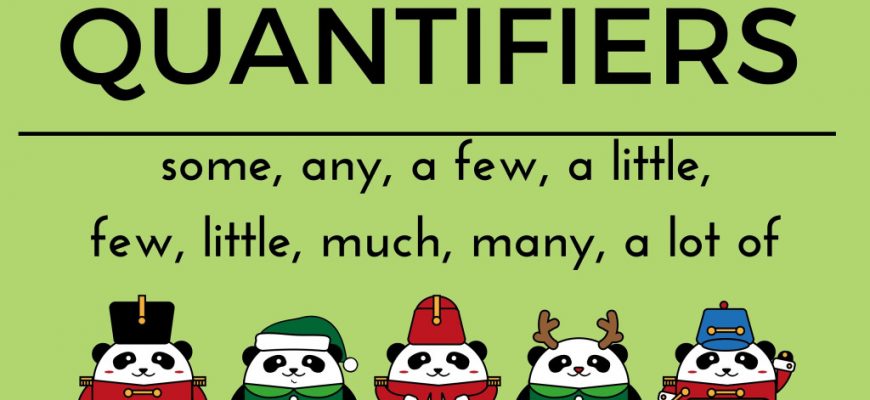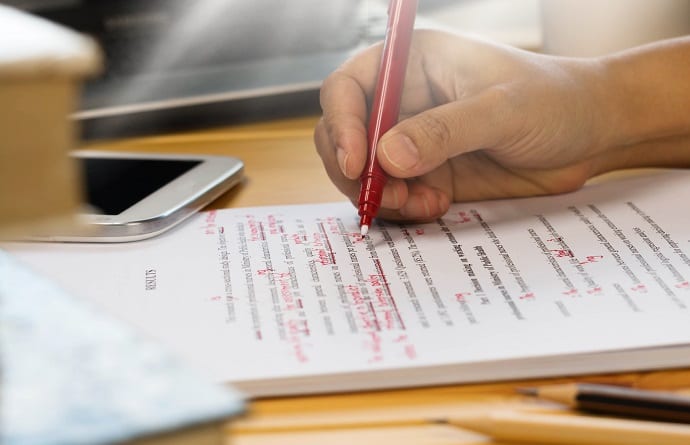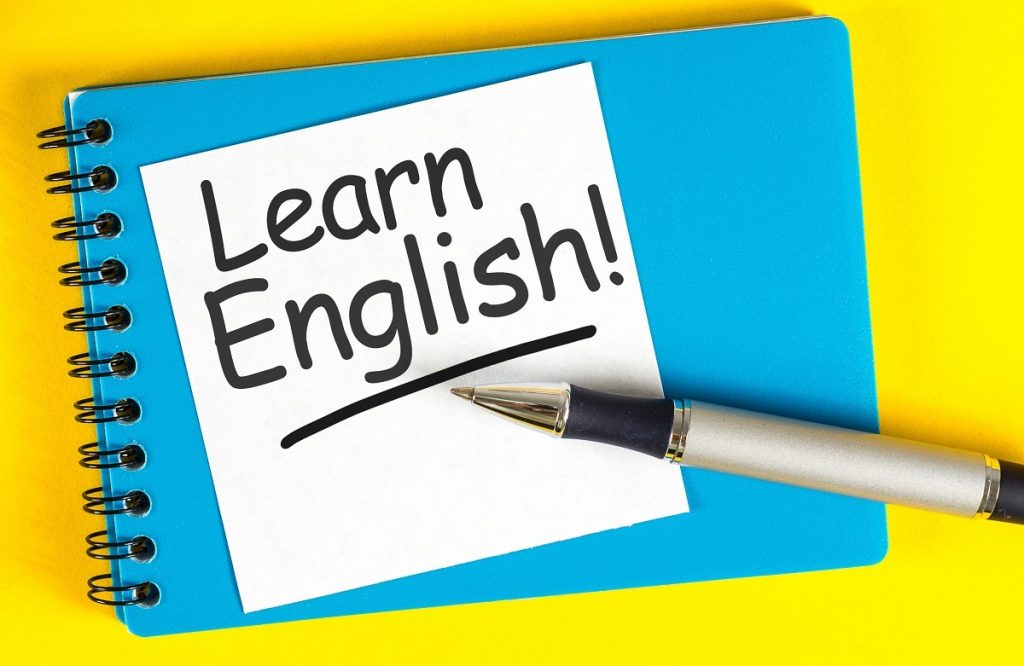Trong ngữ pháp tiếng Anh Định lượng từ (Quantifiers) là chủ điểm ngữ pháp vô cùng quen thuộc và xuất hiện nhiều trong giao tiếp cũng như các bài kiểm tra với tần suất thường xuyên. Chính vì vậy, bài viết của duhoctms.edu.vn sẽ cung cấp đến các bạn kiến thức chi tiết về Định lượng từ (Quantifiers).
Nội dung chính:
1. Khái niệm về Định lượng từ (Quantifiers)
Các từ chỉ số lượng hay còn gọi là định lượng từ, đặt trước danh từ để bổ nghĩa cho danh từ.
Một số từ chỉ số lượng chỉ trong tiếng anh đi với danh từ đếm được, số khác lại đi với danh từ không đếm được, và một số lại có thể đi với cả danh từ đếm được và không đếm được.
2. Phân loại Định lượng từ (Quantifiers)
2.1. Các từ đi với danh từ không đếm được

- much
- a great deal of
- a large (amount) of
- a little, little, very little
- less
- a bit (of)
2.2. Các từ đi với danh từ đếm được
- many
- a large number of
- a great number of
- a majority of, a number (of)
- a few, few, very few
- several
2.3. Các từ đi với cả 2 loại danh từ
- all
- a lot of
- lots of
- plenty of
- a (large) quantity of
- enough
- more
- most
- no
- none
- not any
- some
- any
3. Cấu trúc và cách dùng các loại định lượng từ
3.1. Từ chỉ số lượng đi với danh từ số nhiều
Some
Some + countable noun (số nhiều) + V(số nhiều)
Ví dụ: Some pens are on the table. – Có một số cây viết trên bàn.
Any
Ví dụ: There aren’t any chairs in the room. – Không có cái ghế nào ở trong phòng cả.
Many
Many + countable noun (số nhiều) + V(số nhiều)
Ví dụ: There aren’t many people living here. – Không có nhiều người sống ở đây.
A large number of

A large number of + countable noun (số nhiều) + V(số nhiều)
Ví dụ: A large number of English books have been bought by him – Một số lượng lớn sách tiếng Anh đã được anh ta mua.
A great number of
A great number of + countable noun (số nhiều) + V(số nhiều)
Ví dụ: A great number of students said they were forced to practise the piano. – Rất nhiều học sinh bảo rằng họ bị ép phải luyện piano.
Plenty of
Plenty of + countable noun (số nhiều) + V(số nhiều)
Ví dụ: There were plenty of berries. – Có nhiều trái mâm xôi.
A lot of/ lots of
A lot of/ lots of + countable noun (số nhiều) + V(số nhiều)
Ví dụ: A lot of pupils/ ots of pupils are in the library now. – Rất nhiều học sinh/rất nhiều học sinh đang ở trong thư viện bây giờ.
Few/ a few
Few + countable noun (số nhiều) + V(số nhiều)
A few + countable noun (số nhiều) + V(số nhiều)
Ví dụ:
- The house isn’t full. There are a few rooms empty. – Ngôi nhà này chưa kín chỗ đâu. Có một vài phòng trống.
- He isn’t popular. He has few friends. – Anh ấy không nổi tiếng. Anh ấy có ít bạn bè.
Several
Ví dụ:
I’ve checked it several times. – Tôi đã kiểm tra nó vài lần rồi.
3.2. Từ chỉ số lượng đi với danh từ đếm được số ít
Every
Ví dụ: I go for walk every morning. – Tôi đi bộ mỗi sáng.
Each
Ví dụ: Each day seems to pass very slowly. – Mỗi ngày dường như trôi qua rất chậm.
3.3. Từ chỉ số lượng đi với danh từ không đếm được
Some
Some + uncountable noun + V(số ít)
Ví dụ: There is some ink in the inkpot. Có một chút mực trong lọ mực
Any
Ví dụ: We haven’t got any butter. – Chúng tôi không có tí bơ nào.
Much
Much + uncountable noun + V(số ít)
Ví dụ: There isn’t much fresh water on earth. – Không có nhiều nước sạch trên trái đất.
A large amount of
Ví dụ: He borrowed a large amount of money. – Anh ta đã mượn một số tiền lớn.
A great deal of
A great deal of + uncountable noun + V (số ít)
Ví dụ: A great deal of rice is produced in Vietnam – Rất nhiều gạo được sản xuất tại Việt Nam
Plenty of
Plenty of + noun (không đếm được) + V(số ít)
Ví dụ: Don’t rush, there’s plenty of time. Đừng vội vàng, còn rất nhiều thời gian.
A lot of/ Lots of
A lot of/ lots of + noun (không đếm được) + V(số ít)
Ví dụ:
- Lots of sugar is sold in the shop. – Rất nhiều đường được bán tại cửa hàng đó.
- A lot of time is needed to learn a language. – Cần nhiều thời gian để học một ngôn ngữ.
Little/ a Little
A little (không nhiều nhưng đủ dùng) + uncountable noun + V(số ít)
Little (gần như không có gì) + uncountable noun + V(số ít)
Ví dụ:
- There is little sugar in my coffee. – Có rất ít đường trong cà phê của tôi.
- He spoke a little English, so we was able to communicate with him. – Anh nói một chút tiếng Anh, vì vậy chúng tôi có thể giao tiếp với anh ấy.
4. Phân biệt một số cách dùng của định lượng từ

4.1. Some/Any
| Some | Any |
| Dùng trong câu mang nghĩa khẳng định. VD: I have some money. | Dùng trong câu phủ định hoặc câu hỏi. VD: I don’t have any money. |
| Dùng với nghĩa “một vài”. VD: Some dictionaries can give you the meaning of this world. | Dùng với nghĩa là “bất kỳ”. VD: Any dictionaries can give you the meaning of this world. |
| Dùng trong câu mời/câu đề nghị VD: Would you like some coffee? | Dùng trong câu có mệnh đề “If/Whether” VD: If you have any questions, feel free to ask me. |
4.2. Few/Little – A few/A little
| Few/Little | A few/A little |
| – Dùng với nghĩa phủ định: quá ít, không đủ, gần như không có VD: I’ve got few interesting books. – Dùng sau các từ: “very, so, too” mang ý nghĩa nhấn mạnh VD: We had too little time left before the exam. – Dùng sau các từ chỉ định: “the, my, her, their, its” VD: We should use the little money to buy food. | – Dùng với nghĩa khẳng định: 1 vài, 1 chút VD: I’ve got a few interesting books. – Dùng sau “only”: mang nghĩa chỉ chút ít, không nhiều VD: We brought only a few items while travelling abroad. |
4.3. Much/Many – Lots of/A lot of/Plenty of
| Much | Lots of/A lot of/Plenty of |
| – Dùng phổ biến trong câu hỏi và câu phủ định VD: They didn’t show so much interest in my talk. – Dùng trong câu khẳng định khi đứng sau các từ: so, too, as VD: She offered me so much food, I couldn’t eat them all. – Much: dùng như trạng từ bổ nghĩa cho động từ, tính từ. Có thể đứng trước “more, too”, đứng sau “so, very, too” VD: We love children so/very much. | – Dùng phổ biến trong câu khẳng định VD: He spent a lot of money for the car. |
4.4. Not a/Not any – No/None of
| Not a/Not any | No/None of |
| Mang ý nghĩa là “không” VD: There is not a key for this door. | – No + Noun/Nothing/Nobody = not + any dùng để thay thế cho “not a” hoặc “not any” để nhấn mạnh nghĩa phủ định. VD: There is no key for this door. – None = no + noun được dùng để thay thế cho một danh từ được nhắc đến trước đó. VD: Marry has 2 children but Ann has none. |
4.5. Most/Mostly – Almost
| Most/Mostly | Almost |
| – “Most”: dùng trước danh từ không xác định. VD: Most young people like facebook. – “A most = a very” VD: Thank you for a most interesting party. – “Mostly”: dùng như một trạng từ VD: The customers here are mostly kids. | – Dùng như một trạng từ, bổ nghĩa cho động từ, tính từ, danh từ VD: It was almost midnight when she came home. – Luôn đi với cụm danh từ mở đầu bằng các từ: all, every, no, any. VD: Almost everyone here likes her speech. |
4.6. Each/Every – All
| Each/Every | All |
| – Dùng với các danh từ đếm được số ít VD: Each ticket costs 200,000 VND. – Dùng “every” với các từ: “almost, virtually, nearly” để bao hàm cả nhóm đối tượng VD: Almost every visitor was surprised at the scenery. – Dùng “every” với danh từ số nhiều khi nói về một thời hạn cụ thể. VD: We should have a medical check every six months. | – Dùng với danh từ đếm được số nhiều/danh từ không đếm được VD: All students have to wear uniforms. – Dùng nhấn mạnh cho đại từ số nhiều: “you, we, they, us, them” VD: We all like comic books. – “All = everything”: Dùng khi theo sau là mệnh đề quan hệ VD: I agree with all that they said. |
4.7. Both – Neither/Either
| Both | Neither/Either |
| – Dùng để chỉ 2 người/vật, động từ theo sau luôn ở dạng số nhiều VD: Both girls are singers. – Ngoài ra “both” thường xuất hiện trong các cấu trúc sau: S + both + V/ ( S + be + both) VD: Sam and Tim both want to be singers. Both A and B + V (số nhiều) VD: Both Sam and Tim are singers. Both of + V (số nhiều) VD: Both of them are singers. | – Dùng để chỉ 2 người/vật nhưng ngược nghĩa với “and”, danh từ theo sau luôn ở dạng đếm được số ít VD1: Neither dress fitted her. VD2: She didn’t like either dress. – Neither of/Either of + đại từ (danh từ số nhiều) + động từ (số ít hoặc số nhiều) VD: Neither of them is French. |
4.8. Another – Others/the others
| Another | Other(s)/The other(s) |
| – Dùng với danh từ đếm được số ít VD: Can you give me another cup of coffee. – Dùng với các cụm từ chỉ khoảng cách/thời gian/tiền bạc. VD: It’ll cost another $10 to get it. one another: lẫn nhau (3 người trở lên)each other: lẫn nhau (giữa 2 người) VD: Our team always help one another. VD: I and my sister always help each other. | Other + Danh từ không đếm được/danh từ số nhiều. VD: Some music calms people, other music has the opposite effect. Từ chỉ định + other + danh từ đếm được số ít VD: There’s one other thing we need to mention before we stop. Some + N (số nhiều). Others + V VD: Some children like fish. Others like meat.the others = the rest VD: These books are Tom’s, the others are mine. Every other: xen kẽ, không liên tục VD: I go jogging every other day. the other day = a few day ago VD: I bumped into George the other day, he looked well. the other one(s) = not this/these but something else VD: These shoes are too small. Can I try the other one, please? |
5. Bài tập ứng dụng Định lượng từ (Quantifiers)
Hãy cùng làm bài tập dưới đây để hiểu rõ về ngữ pháp Định lượng từ (Quantifiers) nhé!

Bài tập
Bài tập 1: Fill in the gaps with a word from the box below in the correct form. If the word is countable, you may need to change it to a plural form.
| advice cake challenge electricity information situation size |
- I’ve faced many____________ in my life, but none as difficult as this.
- Some of the best____________ I heard while I was a student was to take regular breaks when studying so that you don’t lose concentration.
- A dictionary is a wonderful source of ____________
- I’ve made some little ____________ for Claire’s birthday party.
- One hundred years ago cars all looked the same but these days they come in lots of different shapes and____________
- My job as a journalist means I can find myself in difficult____________ at times, but at least it’s never boring.
Bài tập 2: Fill in the gaps with amount, number, few, little, many or much in the reading test below
How much sleep do we need?
The 1 _____________ of sleep each person needs depends on 2 _____________ factors, including age. Infants generally require about 16 hours a day. For most adults, seven to eight hours a night appears to be the ideal 3 ____________ of sleep, although a 4 ____________ people may need as 5 ____________ as ………………………………. five hours’ sleep or as 6 ____________ as ten hours sleep each day. Getting too 7 ____________ sleep creates a sleep debt, and eventually, your body will demand that the debt be repaid.
A large 8 ____________ of people over 65 have frequent sleeping problems, such as insomnia, and deep sleep stages in 9 ____________ elderly people often become very short or stop completely. Microsleeps, or very brief episodes of sleep in an otherwise awake person, are another mark of sleep deprivation. In 10 ____________ cases, ____________ people are not aware that they are experiencing microsleeps. The widespread practice of burning the candle at both ends in western industrialized societies has created so 11____________ sleep deprivation that what is really abnormal sleepiness is now almost the norm.
Bài tập 3: Điền “some” hoặc “any” vào các câu sau
- Would you like ____ coffee?
- You can catch ___ bus because they all go pass your university.
- We bought ____ flowers at the market.
- Last night, Jerry went out with ___ friends.
- Have you seen ____ good movies lately?
- There aren’t ____ students in the class.
Bài tập 4: Dựa vào nghĩa của câu, điền “a few, few, a little, little”
- “Have you ever watched this movie?” – Yes, I’ve seen it ____ times.
- Please, help me – I will give you ___ advice on this problem.
- Can you buy some milk on the way home?. We only have ____ milk.
- ___ students could afford to eat in the restaurant, it’s too expensive.
- Sarah likes dancing but she has ___ ability.
- The rain is getting heavier. There seems ____ chance of going out.
Bài tập 5: Chọn một trong hai phương án sau để hoàn thành câu
- How much/many butter do we have?
- In Saigon, we have a lot of/ much rain, but we don’t get much/many cold fronts.
- If you have some/any problems, don’t hesitate to ask me.
- He can speak little/ a little English because he used to be a migrant worker.
- My father smokes a lot of/ much cigarettes.
- A large amount of/ A great number of fish is swimming in the lake.
- Plenty of/ a great deal of tourists visit Hanoi every day.
- We didn’t spend much/many time shopping while visiting Saigon.
Bài tập 6: Điền some hoặc any vào chỗ trống
- I don’t have …………… paper.
- Is there …………… petrol in the car?
- I buy ……………fruit, but I don’t have ……………vegetables.
- Do you have …………… stamps? I need two.
- I need ……………butter to make a cake.
- I don’t have ……………free time today. Sorry.
- Are there…………… potatoes in the basket?
- There is ……………ink-pot on the table.
Bài tập 7: Điền vào chỗ trống: HOW MUCH hoặc HOW MANY để hoàn thành câu sau
- ………………………..beer is there in the fridge?
- ……………………………..eggs do you want?
- ……………………..languages do you speak?
- ……………………..people are there in the class.
- ………………………..days are there in a week.
- ………………………..milk do you drink every day?
- …………………………..kilos of rice do you want?
- …………………………soda does she want?
Bài tập 8: Chia động từ

- What time ……………… you (go) ………………….. to school?
- Lan (watch) ……………………….. T.V three times a week.
- Nam and Ba often (go) ………………………. fishing on Sunday.
- We (not go) ………………………… to school on Sunday.
- My brother likes jogging. He ( jog) …… every morning. At the moment, he (jog)……. in the park.
- What is she doing ? -She (cook)………………………… lunch.
- Where is Ba? He (be) ………………. in the yard. He (play)………………………… badminton.
- Hoa (not read)………………………….. book now, he (do)…………………….. his homework.
- They (do) …………………………………….. their homework in the evening.
- Nam (visit) ………………………………… Hue this summer vacation.
Bài tập 9: Điền a/ an/ some/ any vào chỗ trống
- There is ……………… banana in the basket.
- I need ………………tea.
- Are there ………………tomatoes in the fridge?
- We have ………rice, but we don’t have ……meat.
- There’s ………………orange on the table.
- I’d like ………………apple juice.
- He has …………TV and …………computer.
- Would you like ………………ice- cream?
- I have………….. friends in Hue.
- Do you have ……………dogs or cats at home
- Would you like ………………cup of tea
- I would like……………… cakes, please.
- Can I have …………glass of milk?
- Thank you. And ………box of chocolates would be fine.
Bài 10: Fill in the gaps with a word from the box below in the correct form. If the word is countable, you may need to change it to a plural form.
| advice cake challenge electricity information situation size |
1. I’ve faced many ……challenge…… in my life, but none as difficult as this.
2. Some of the best____________ I heard while I was a student was to take regular breaks when studying so that you don’t lose concentration.
3. A dictionary is a wonderful source of ____________
4. I’ve made some little ____________for Claire’s birthday party.
5. One hundred years ago cars all looked the same but these days they come in lots of different shapes and____________
6. My job as a journalist means I can find myself in difficult____________ at times, but at least it’s never boring.
Bài 11. Read the extract from a talk about a holiday destination. Decide if the underlined quantity expressions are correct or not. Tick (/) them if they are right and correct them if they are wrong.
The island is beautiful. Don’t be dismayed when you get off the plane and find yourself in a large, rather ugly city with 1 a little sense of the old way of life you have read about. Just a short car ride away is the island you have been promised with its small villages and slow pace of life. And there really is 2 anything for everyone. For those that like sun bathing, it has 3 some of the most beautiful beaches in the world. If you like walking, the paths take you through some breathtaking scenery.
4 Little other places can match the stunning landscape of this island. For water sports enthusiasts, there are 5 any unusual activities such as diving for pearls or turtle spotting, along with 6 few of the more common sports such as waterskiing or windsurfing. If history is your thing, don’t worry. There’s 7 much history round every corner. Ruins from the ancient civilisations that lived here over 3000 years ago are everywhere, and although 8 a lot of people come here just to see the palace, you can find some lesser remains scattered around the surrounding hills.
Visit it 9 some time of the year and you will not be disappointed. Not 10 many places in the world can offer so much. 11 Not any holiday will ever match this one – our island has got it all!
| 1. …………… | 7. …………… |
| 2. …………… | 8. …………… |
| 3. …………… | 9. …………… |
| 4. …………… | 10. …………… |
| 5. …………… | 11. …………… |
| 6. …………… | |
Đáp án bài tập Định lượng từ (Quantifiers)
Đáp án bài 1
| 1. some | 2. any | 3. some |
| 4. some | 5. any | 6. any |
Đáp án bài 2
| 1. a few | 2. a little | 3. little |
| 4. few | 5. little | 6. few |
Đáp án bài 3
| 1. much | 2. a lot of/ many | 3. any | 4. a little |
| 5. a lot of | 6. a large amount of | 7. plenty of | 8. much |
Đáp án bài 4
| 1. challenge | 2. advice | 3. information |
| 4. cake | 5. sizes | 6. situations |
Đáp án bài 5

- amount
- many
- amount
- few
- little (sleep is uncountable)/ few (hours are countable)
- much/many
- little
- number
- many
- many
- much
Đáp án bài 6
| 1. any | 2. any | 3. some-any | 4. any |
| 5. some | 6. an | 7. any | 8. some |
Đáp án bài 7
- How much
- How many
- How many
- How many
- How many
- How much
- How many
- How much
Đáp án bài 8
- do you go
- watches
- go
- don’t go
- jogs – is jogging
- is cooking
- is – is playing
- isn’t reading-is doing
- do
- is going to visit
Đáp án bài 9
| a | some | any | some –any | an | some | a – a |
| some | some | any | a | some | a | a |
Đáp án bài 10
| 2. advice | 3. information | 4. cake | 5. sizes | 6. situations |
Đáp án bài 11
2. something (positive statement)
3. ✔️
4. Few (“places” is countable)
5. some/many (positive statement)
6. a few
7. plenty of / a lot of / lots of (much is not usually used in positive sentences)
8. ✔️
9. any ( = it does not matter which time
10. ✔️
11. No
Bài viết của trên đây, duhoctms.edu.vn đã tổng hợp lý thuyết và bài tập về Định lượng từ (Quantifiers) trong tiếng Anh. Đây là chủ điểm ngữ pháp hết sức quan trọng vì vậy hãy thực hành thật nhiều để nắm trọn kiến thức nhé!


Bình luận